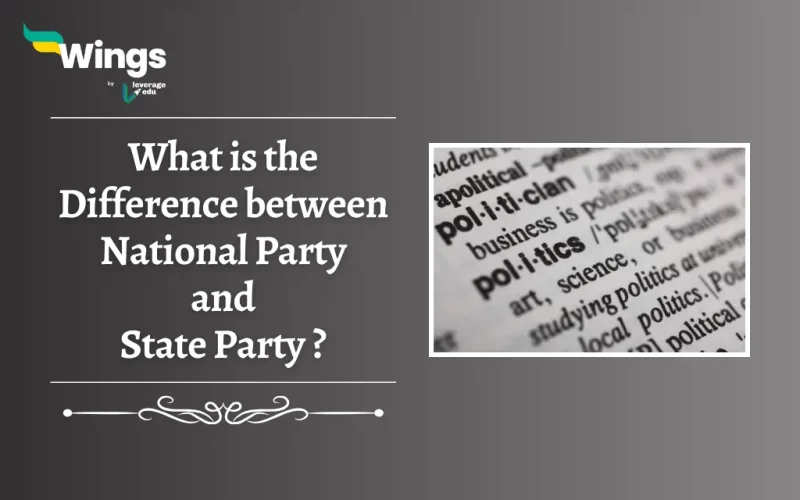A National Party such as the Bharatiya Janata Party (BJP) and the Indian National Congress (INC), function across multiple States and have a presence in India. Furthermore, they mould policies on a National level, hence contesting in Elections in all States. On the other hand, a State Party, like the Telugu Desam Party (TDP) in Andhra Pradesh or the Shiv Sena in Maharashtra mostly focus on regional issues and operates within a particular States. Additionally, they symbolise the aspirations of their respective regions, thus advocating for State-specific policies and governance. Read on to know more in detail about the Difference between National Party and State Party.
Difference between National Party and State Party
Furthermore, here is the difference between both:
| Difference between National Party and State Party | ||
| Feature | National Party | State Party |
| Presence | Found in multiple States, representing all India. | Limited to one particular State or a few States. |
| Recognition | Recognized as a National Party by the Election Commission of India. | Recognized as a State Party by the Election Commission of India. |
| Membership | Has a significant presence and membership across various States. | Mainly consists of members from the State it represents. |
| Ideological Influence | Often has a broader, national-level ideology. | Tends to have a more localised or regional ideology. |
| Political Ambitions | Aspires to form the Central government. | Aims to form the State government. |
| National Representation | Contest elections for Parliament (Lok Sabha) and have a presence in multiple States. | Focuses on State-level elections like Legislative Assembly. |
| Resources | Generally have more resources and reach. | Usually has more limited resources and reach compared to National parties. |
| Decision Making | Centralized decision-making structure. | Decentralized decision-making structure. |
| Example | Indian National Congress (INC), Bharatiya Janata Party (BJP) | Aam Aadmi Party (AAP),Telugu Desam Party (TDP) |
Related Blogs
Lastly, we hope you liked our blog and gained an understanding of the Difference between National Party and State Party. Moreover, you may even read more blogs and empower yourself with knowledge regarding Civics and Polity!
 One app for all your study abroad needs
One app for all your study abroad needs













